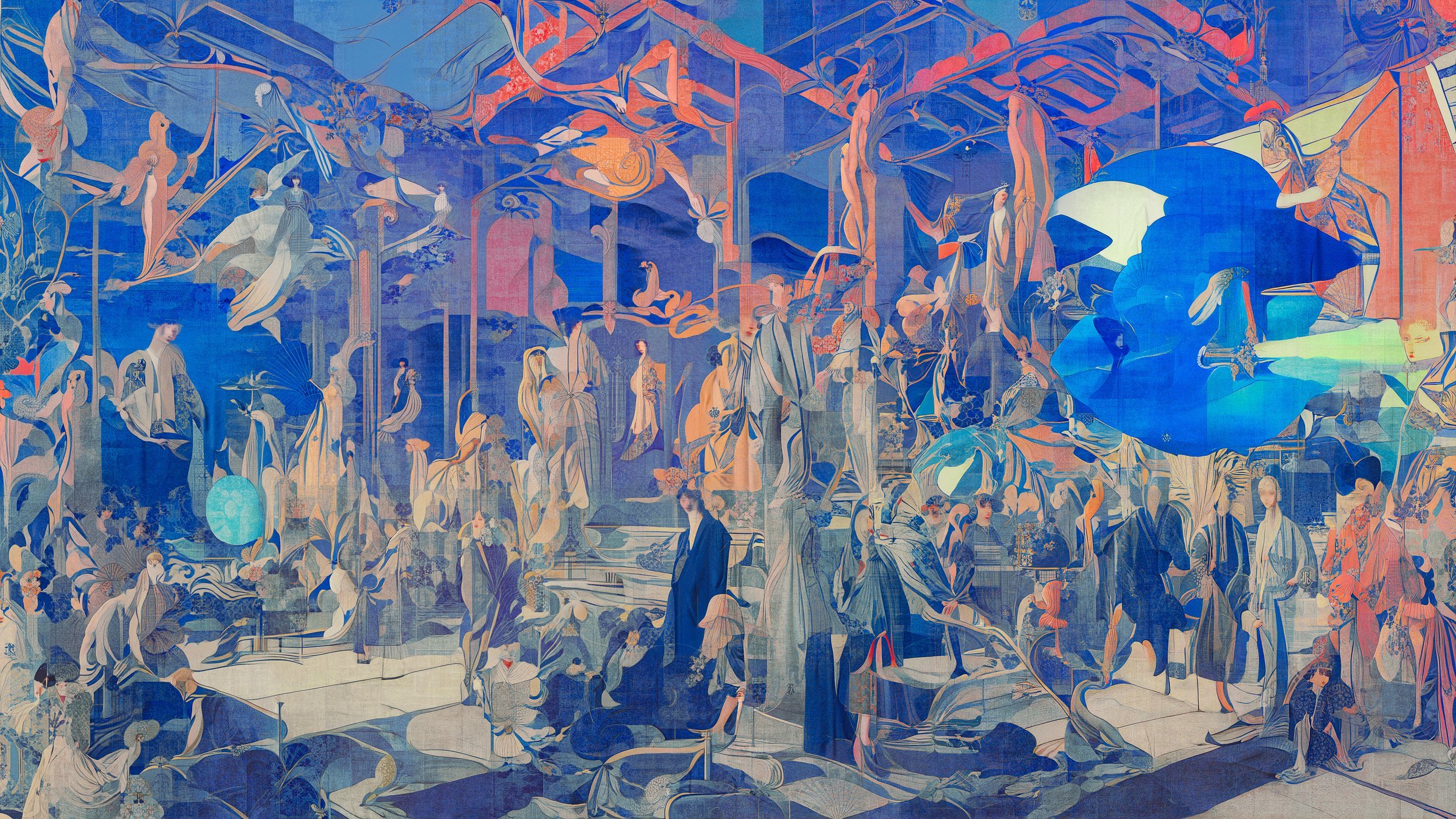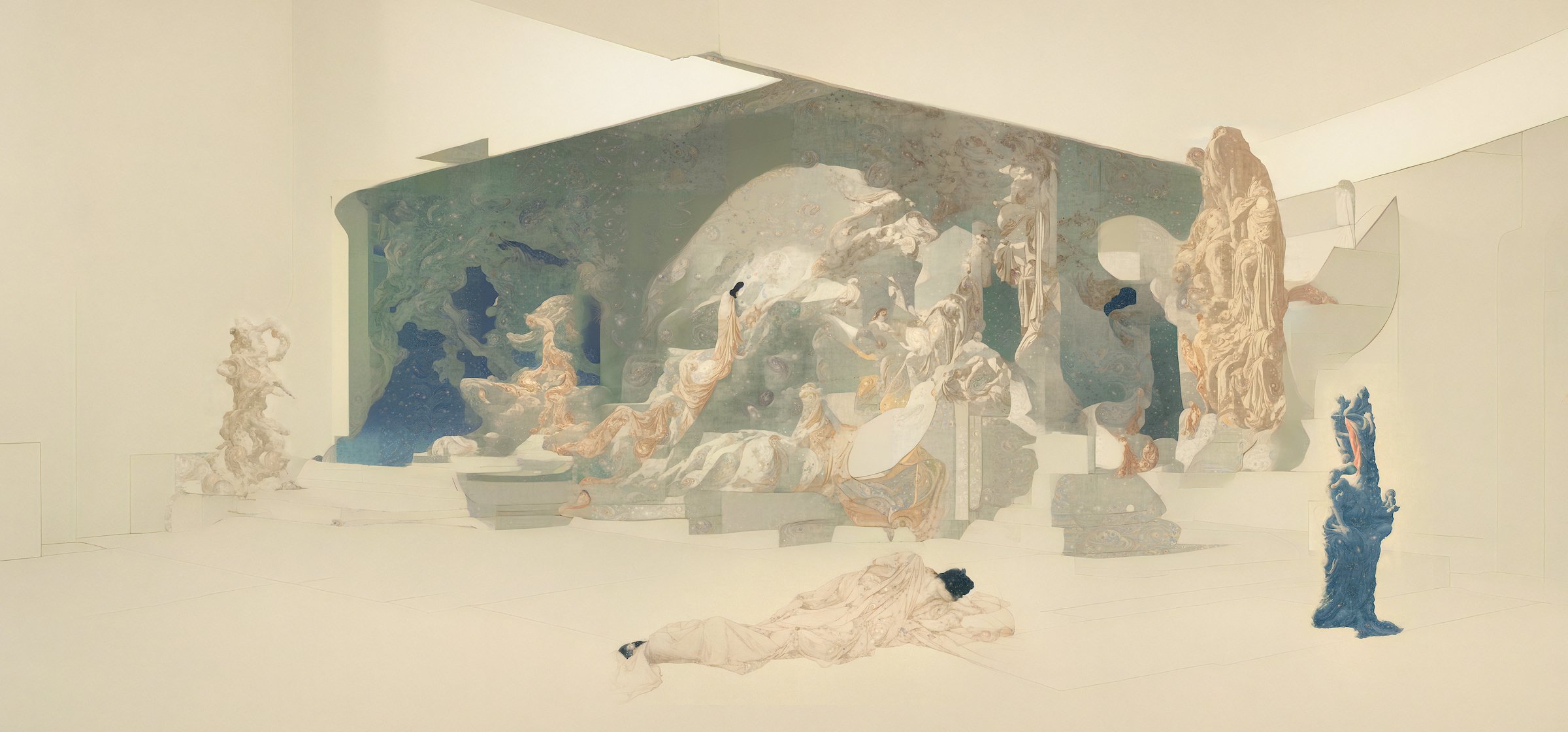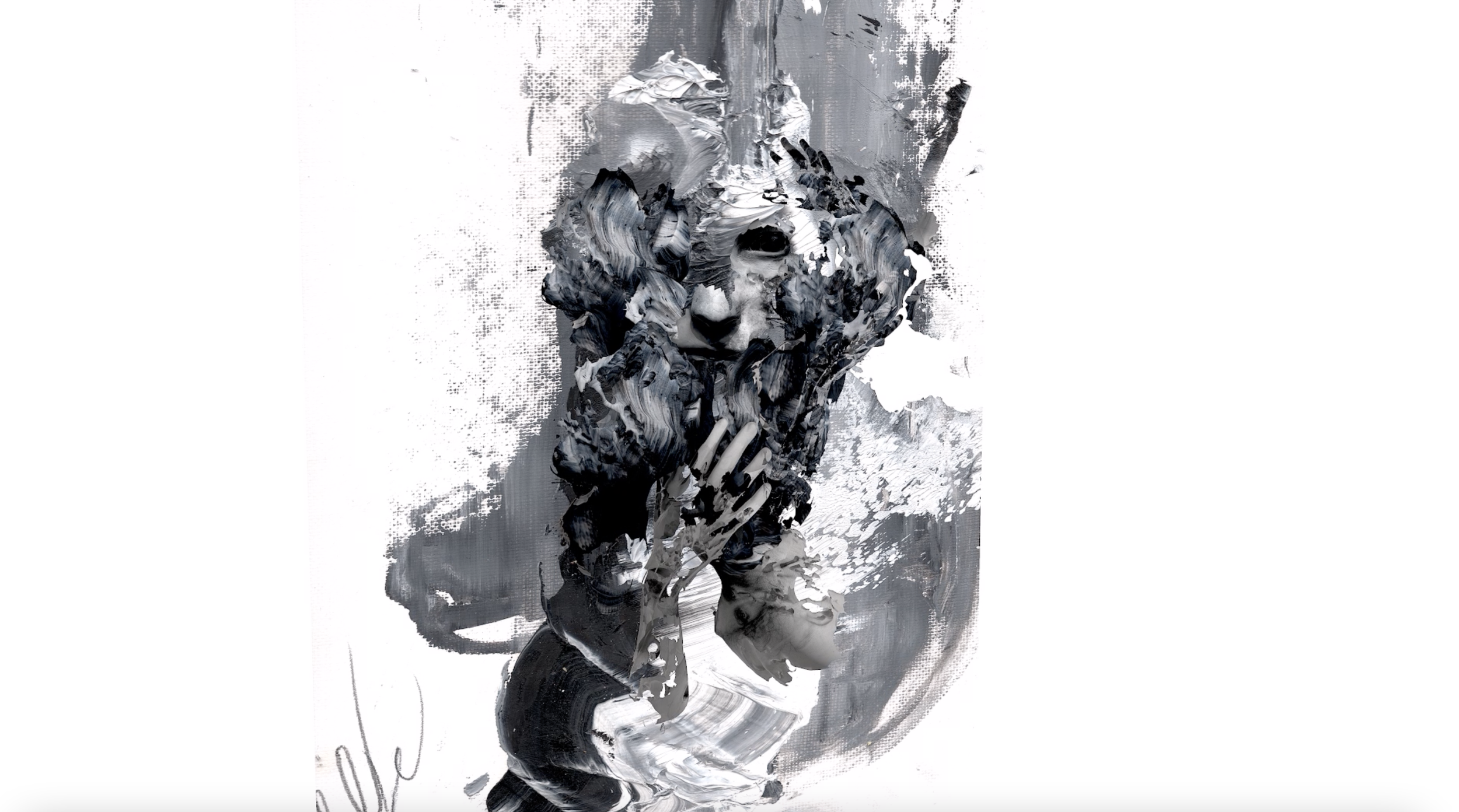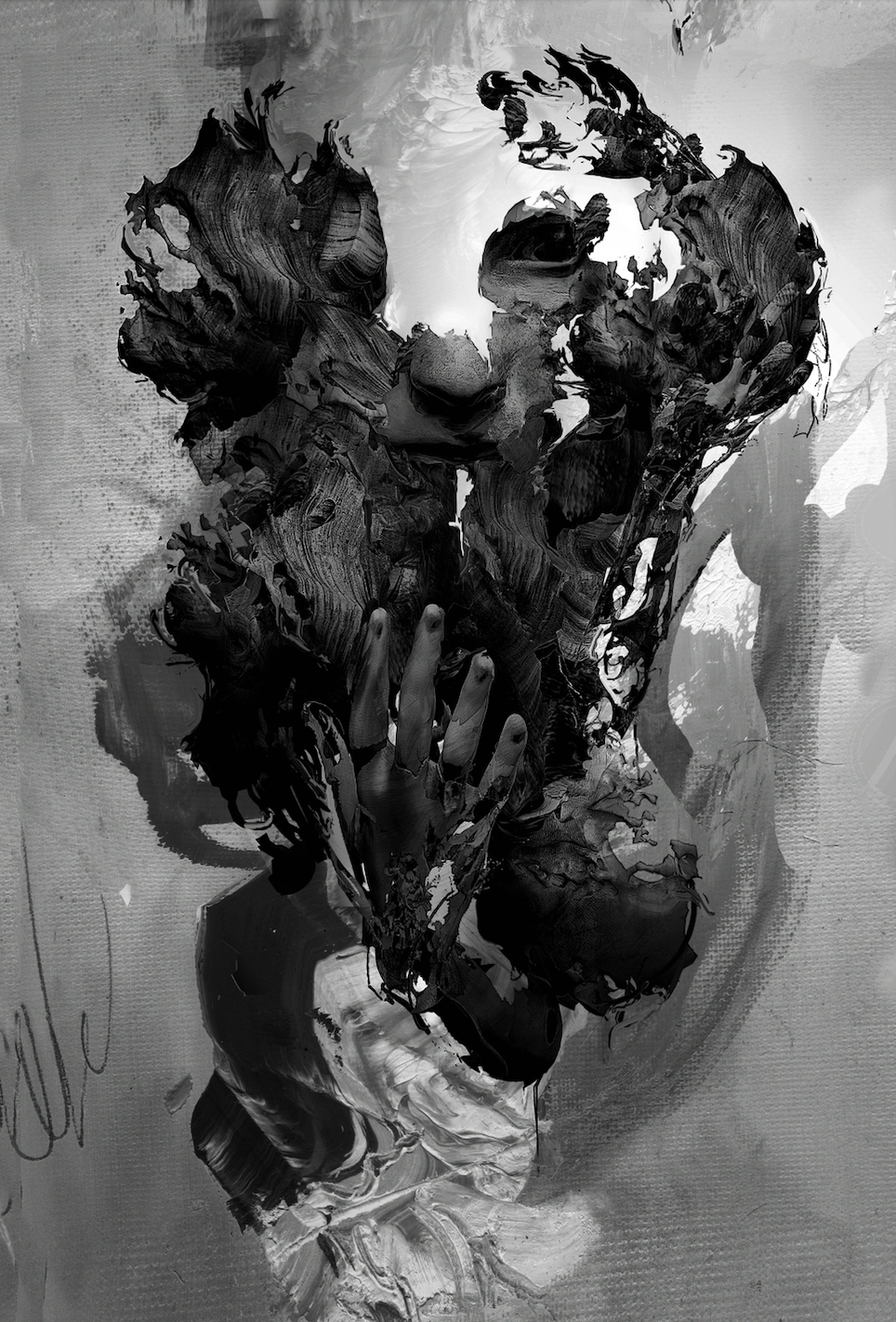DIMENSIONALISTI - CADAF NYC 2022
Kate Vass Galerie is pleased to announce the exclusive program for CADAF 2022, taking place in New York from 11-13 November. We will present the work of computer art pioneer Charles Csuri, as well as Ganbrood and Lucas Aguirre, who worked with 3D technology in their artistic practice.
Over the centuries, many artists have tried to depict our three-dimensional world on a two-dimensional surface. The Italian Renaissance was defined by the synthesis of art and science, resulting in the acquisition of a three-dimensional perspective with the help of Euclid’s geometry. The illusion of three-dimensional depth was a major turning point in art history, allowing the development of more naturalistic styles.
Georges Braque, Mandora (1909–10), Tate © ADAGP, Paris and DACS, London 2022
During the first decades of the twentieth century, major modern art movements, such as Cubism or Futurism developed a revolutionary new approach to representing reality. The aim of Cubist artists, such as Picasso and Braque, was to show different viewpoints at the same time, within the same space by breaking the objects into planes. The idea of the fourth dimension was one of the favorite subjects of mathematics, science fiction, and art. There are many historical arguments about how Cubists encountered literature on the fourth dimension, but there is no doubt that their art was influenced by the theory of Henri Poincaré and Maurice Princet. By the end of the 1920s, the temporal fourth dimension of Einsteinian Relativity Theory achieved widespread popularity. As a result, some avant-garde artists recognized that space and time are not separate categories as had previously been taken for granted, but they are related dimensions in the sense of the non-Euclidean conception. Like non-Euclidean geometry, the fourth dimension was a symbol of liberation for artists. It encouraged artists to depart from visual reality and to reject the one-point perspective system that was used for depicting three-dimension.
The non-Euclidean geometry and the new conception of space and time influenced a Hungarian poet, and art theorist, Charles Sirató. As an emigrant in Paris, Sirató was fascinated by modern art, especially by paintings with depth and sculptures with moving elements. In 1936, he wrote a manifesto in which he lumped all the avant-garde tendencies together as a single movement and he called it: Dimensionism. Sirató used the formula “N + 1” to express how arts (like literature, painting, and sculpture) have to absorb a new dimension: literature should leave the line and enter the plane, painting should leave the plane and enter space from two to three dimensions, while sculpture would step out of closed forms to four dimensions. The movement’s endpoint would be “cosmic art”, which could be experienced with all five senses. The manifesto was signed by many prominent modern artists such as Hans Arp, Kandinsky, Robert Delaunay, and Marcel Duchamp.
Although the movement has since been almost completely forgotten, the representation of three-dimensional and four-dimensional space has remained an important theme in art. In the second half of the twentieth century, technology provides artists with even more tools to experiment.
One of the fathers of computer art, Charles Csuri’s research and artistic vision led to advances in software that created new artistic tools for 3D computer graphics, computer animation, and 3D printing. His work, “Cosmic Matter” from 1989 is an iconic example of Csuri’s early development of artistic tools that pioneered the field of computer art and animation. In “Cosmic Matter”, Csuri invented, in collaboration with other programmers, a technique called “texture mapping” that allows him to map his oil paintings onto 3D objects and further created object fragmentation to look like animated paint flying through the air. Further, he uses an embossing technique long before image processing capabilities use in Photoshop. In this picture, Csuri combines his formal fine art training with his revolutionary technology. This work was featured in Charles Csuri's retrospective international exhibition in 2006, at “The Beyond Boundaries”, Siggraph in 2006, & IEEE Computer Graphics and applications in 1990.
Charles Csuri, Cosmic Matter (1989), Unique NFT + Unique original Cibachrome print (30" x 40"), signed by the artist
Spatial depth has always been a decisive element in Ganbrood's work. As a 3D animator in the early 1990s, but also his special effects for movies and later photography, dimensionality played a significant role as an essential part of visual language. In his latest series, SOMNIVM, he has combined visual themes that have inspired him since his youth: antic mythology, fairy tales, fine art, theatre, and science fiction. He used an Artificial Intelligence algorithm, GAN (Generative Adversarial Networks), to mix all these different visual elements. This neural network has enabled him to create more abstract, pseudo-figurative pieces that, at first glance, look figurative but, after close inspection, turn out to be abstract shapes. This series also demonstrates his penchant for illusions and trickery; the works ‘Skené’ and ‘The Displaced’ explore mind-altering effects such as pareidolia, apophenia, and synchronicity. The elements of contradictory mediums he used, like fresco paintings and photography and 3D, unbalance human visual recognition.
The Argentinian artist, Lucas Aguirre combines elements of physical reality in a digital space. His work, “Aparecida” is one of the first experiments with analog painting and 3-dimension. His painted strokes are scanned three-dimensionally and reconfigured using virtual reality. The result of these operations returns to the physical plane and be continued analogically a back and forth between traditional modes and new media. He understands digital tools as a possibility to subvert everyday elements and thus generate other visions. The virtual is a space of pure potentiality.






